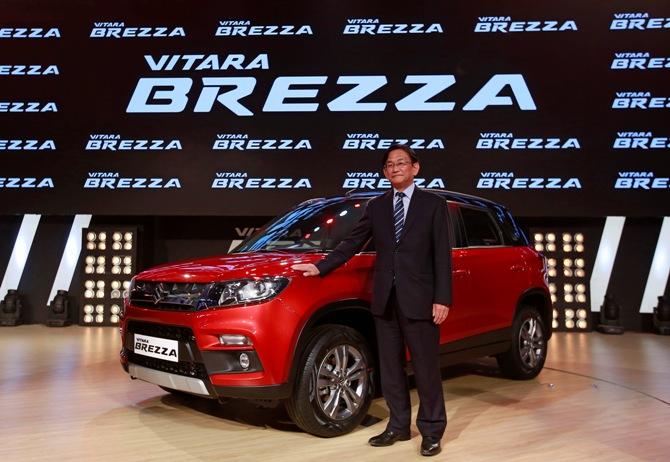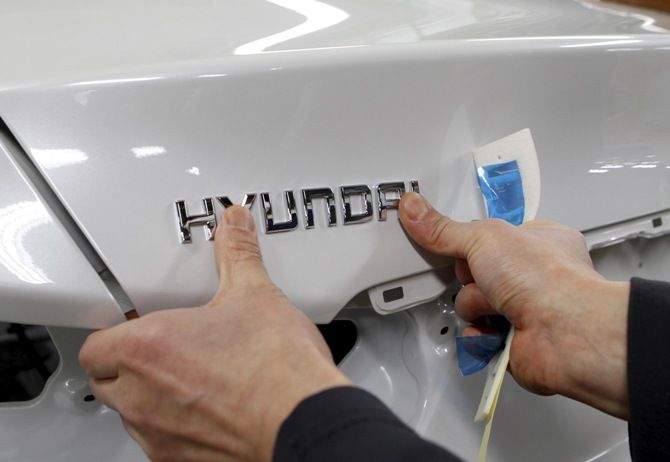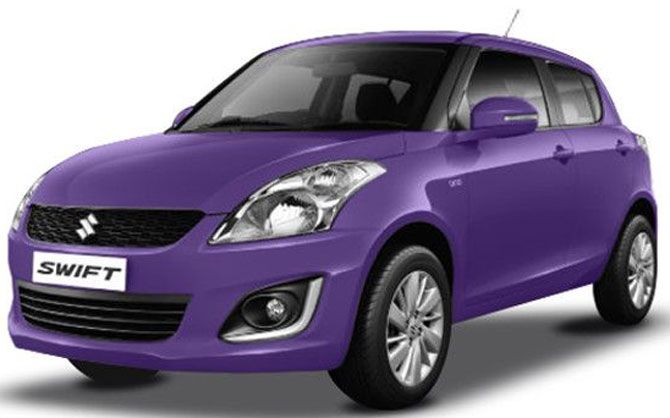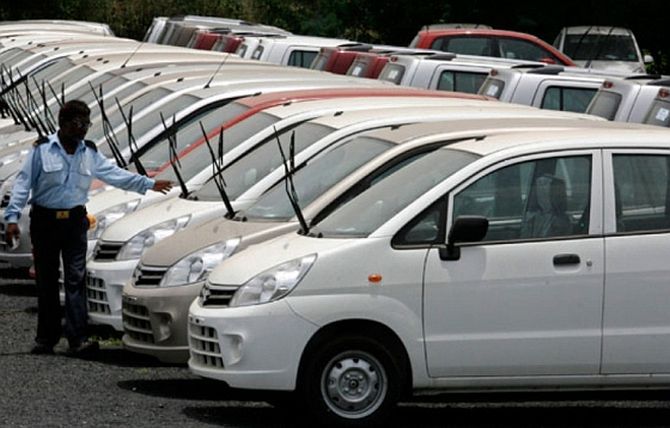 | « Back to article | Print this article |

A six-seven per cent reduction would mean direct saving of Rs 15,000-45,000 (Rs 150-450 billion) on cars and SUVs, if companies were to pass on the full benefit at current prices. Maruti, Hyundai will make the largest gain as both have a large portfolio of products in the below-4 metre segment.
The proposed rollout of a national goods and services tax could make small cars and mini sports utility vehicles cheaper, as a government panel has suggested a GST rate of 18 per cent.

This is much lower for compact cars, where consumers pay 24 per cent at present.
A six-seven per cent reduction would mean direct saving of Rs 15,000-45,000 (Rs 150-450 billion) on cars and SUVs, if companies were to pass on the full benefit at current prices.
Maruti Suzuki and Hyundai would make the largest gain, as both have a large portfolio of products in the below-four metre segment. Mahindra & Mahindra, Tata Motors, Volkswagen, Ford and Renault have also made product launches in this segment.

R C Bhargava, chairman, Maruti Suzuki India, said: “I am yet to come across a single person who does not want GST to be implemented.
"I hope the Bill gets passed during the monsoon session (of Parliament).
"Everybody wants a lower tax rate and so do I.”
A section of the automotive industry wants a uniform tax rate under GST, instead of a dual structure.
While small cars will enjoy 18 per cent, a 40 per cent rate is expected to be slapped on bigger ones.

“We believe demand could shift towards compact sedans and SUVs due to the pricing advantage,” said a Kotak Institutional Equities report.
“We reckon an 18 per cent GST rate is unlikely for mid-sized and large cars, as it would lead to a 16-20 per cent reduction in vehicle prices, leading to higher customer preference for large vehicles as compared to small cars, which the government has not encouraged in the past.”
Honda and Toyota do not have significant exposure to the sub-four metre segment and unlike their peers are voicing displeasure over any dual tax structure for the industry.

Prices of mid-size cars/SUVs such as the Honda City and Hyundai Creta are likely to increase by six per cent, while prices of large SUVs will remain largely unchanged, assuming a 40 per cent GST rate for these segments.
Shekhar Viswanathan, vice-chairman, Toyota Kirloskar Motor, said: “There should be one tax rate for everyone.
"The current excise rate is administered on the length of the vehicle and engine, leading to arguments that engine capacity drives emission.
"Any tax structure should be based on emission and not the length or engine.

"This discrimination against big cars should stop. What they need to look at in cars is whether it is emission friendly or not.”
Touted as one of the biggest taxation reforms in India, Goods and Services Tax will lead to consolidation of multiple indirect taxes such as central excise, service tax and value-added tax, as well as other levies such as the National Calamity Contingent Duty, automobile cess, entry tax and octroi.
However, other changes targeted at the automotive sector such as upgradation to new emission levels (Bharat-VI), mandatory crash test norms and fitment of safety features, all of which are scheduled to hit the market in the next two to four years, will lead to increases in vehicle prices.